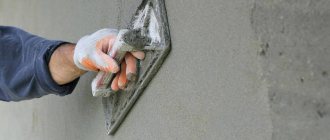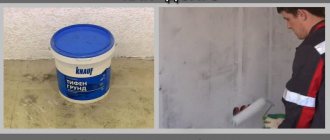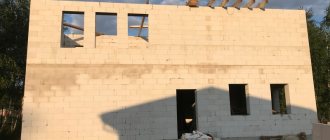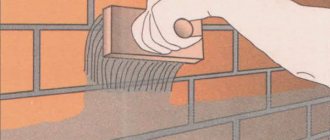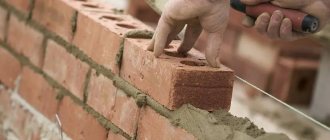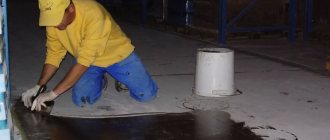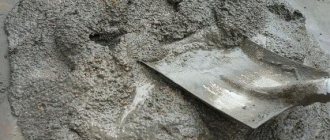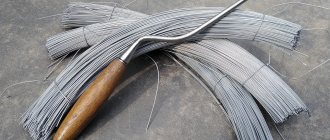- Why do you need a primer?
- What determines primer consumption?
- Primer consumption rates
Primer is the main stage of finishing work. You can glue wallpaper, prepare to work with drywall, apply plaster, but you will begin all these processes with a primer. Priming means applying several layers of primer to the work area.
Although the priming process will not be noticed by anyone, this is where any work related to finishing should begin. To prime surfaces, you need to know the proportions in using this material. Without this knowledge, you will not be able to do correct and high-quality work. Moreover, you will not be able to calculate the required amount of money to purchase the required amount of material.
Primer consumption rates
You should know that with low consumption, the cost of the primer mixture is significantly less than paint and wallpaper glue.
Manufacturers
To get a good result when priming a particular surface, you should purchase only high-quality mixtures with high technical characteristics. Before purchasing an acrylic-based primer, you should familiarize yourself with the leaders in the production of paints and varnishes and the products they offer.
San Marco
The Italian company San Marco occupies a leading position in the industry of production and sale of paint and varnish products for professional construction. The company supplies its products to more than a hundred countries around the world. New technologies are regularly introduced at San Marco production sites, which allows us to constantly improve the quality of products and develop new modifications of materials.
Concentrated acrylic-based primer San Marco Portici is intended for interior work. The mixture can be applied to plaster, concrete surfaces and drywall sheets. Portici primer mixture penetrates deeply into the structure of materials, thereby strengthening the base. The solution improves the adhesion of walls to the finishing coating.
"Lakra"
specializes in the production of paints and varnishes. All products are manufactured using modern imported equipment. The materials are made from high-quality foreign raw materials. Products undergo quality control at all stages of production.
produces a wide range of acrylic-based primers. The mixtures differ in their composition and purpose, which allows you to choose the appropriate composition for any job and surface.
"North"
produces a wide range of modern construction and finishing mixtures. Paint and varnish materials are superior in quality and technical indicators to many analogues, both Russian and imported. The enterprise has implemented scientific laboratories for the development of its own unique technologies for the production of materials.
Acrylic mixture "Nortex Ground" is intended for treating wooden, concrete, brick and stone surfaces indoors and outdoors. The primer can also be applied to plaster or plaster walls. The “Nortex Grunt” solution contains antiseptic components, which allows you to protect the processed materials from fungal growths and mold.
The primer forms a colorless coating. However, you can add colors of the desired shades to the mixture. The acrylic solution strengthens the structure of the impregnated material and improves adhesion to the finish coating
"Empils"
is one of the largest manufacturers of paint and varnish products on the Russian market. All materials are manufactured using advanced technologies and meet international quality standards. Paint and varnish coatings are distinguished by their versatility and environmental friendliness.
The polyacrylic primer mixture "Oreol", produced by , is water-based. The product is notable for its low price and versatility. The primer contains antiseptic additives, which allows the solution to be used not only for interior but also for exterior use.
What determines primer consumption?
The material of the treated surface is the main factor influencing costs - porous ones will require more, for smooth ones very little is needed;
- A set of components for the primer itself;
- Properties of the material for further application;
- Environmental conditions;
- The level of professionalism of the master;
- Number of layers applied.
The choice of tool plays a big role in the amount of coating applied: spray gun, brush or roller. Lower costs when working with a spray gun, the highest costs when working with a roller.
Application of primer GF 21: what you need to know
GF 21 is used as a protective layer applied to wooden and metal structures of buildings, outside and inside. It is applied to a cleaned and then degreased surface.
The primer helps to increase the anti-corrosion qualities of the metal, eliminates defects, and emphasizes the structure of wooden structures.
GF 21 is used at almost any temperature.
Primer is a flammable substance. A composition with a specific odor contains up to 45% volatile substances. When working, they observe fire safety measures - ventilation is provided, and they work in gloves and a respirator. If primer gets on your skin, wash with warm water and soap.
Before application, thoroughly clean and degrease the surface. Clean with sandpaper, a file if it is metal, or a drill with a brush attachment. Traces of rust can be removed with a converter. The wood is puttied and sanded before application.
Degreasing is carried out with gasoline, acetone or a low-fat solvent. Before application, the surface to be treated is dried.
It must be remembered that on a wet and frozen surface the primer does not adhere well. During long-term storage, a film forms on it, which is removed before stirring.
Practice has proven that the GF series guarantees good adhesion of paint to glass, ceramics, concrete and plastics.
Types of primer
Deep penetration is used on loose, fragile surfaces for more reliable fastening
- After application, the surface becomes smooth, porosity is reduced due to soil absorption.
- The cost will be high, but the volume of finishing material will be significantly reduced.
- Such compositions are used to cover plastered walls, wood, chipboard, MDF or similar materials.
Surface primers include acrylic and façade primers. Available in powder form or ready-to-use form. They are white in color and go well with light-colored surfaces. The volume is up to 150 g per square meter. m. Surfaces primed with acrylic composition are ideal for painting with acrylic paints.
Priming functions
Priming improves a number of characteristics of the base intended for subsequent finishing:
- A waterproofing film is formed on the surface.
- The adhesive properties of the surface are improved.
- The top of the material is significantly strengthened.
Applying a primer before filling gypsum board sheets increases the service life of the surface and significantly reduces the degree of water absorption. Some types of solutions contain antibacterial additives. Then the composition protects surfaces from the effects of fungi, mold and other bacteria.
Due to the improvement in the properties of bases coated with the composition, there is a reduction in the consumption of putty for drywall, paint, and decorative plaster.
Scheme for applying primer to a plasterboard ceiling
A deep penetration primer provides drywall with many years of service without losing its properties. Antibacterial additives present in the solution improve the atmosphere in the room and prevent the development of pathogenic fungi and mold. Therefore, it is recommended to use such compounds to treat places to which access will be closed after the installation of plasterboard structures is completed (reinforced concrete floors, walls).
Primer Types
- Acrylic primer is universal, suitable for any type of surface.
- Latex is good for covering wooden walls - it perfectly protects against moisture.
- The silicone composition is intended for indoor and outdoor use and has water-repellent properties.
- Silicate or “liquid glass” tightly closes the pores of plaster and silicates and is used before painting.
- Shellac is used to treat raw, resinous wood.
- Polyurethane primer is used to cover concrete bases, metal and ceramics.
- Alkyd is used for application to plaster, glass, chipboard or metal.
- Epoxy increases the strength of the coating.
- Due to its toxicity, perchlorovinyl primer is intended for external use.
Rust primer: what is it?
This primer for metal has the properties of a rust neutralizer and at the same time, the properties of enamel.
It is “three in one”: a rust converter, anti-corrosion primer and decorative enamel. Typically black, gray or red.
Purpose:
- Protects against further corrosion;
- Paints metal surfaces, both rusty (thickness of non-loose rust, no more than 0.1 mm) and clean;
- Reduces paint consumption;
- Eliminates minor irregularities.
The scope of application is quite wide.
We list the most common of them:
- For painting and protecting metal structures located outdoors: garages, metal supports, fences, gratings, tanks, etc.;
- For painting and protecting the internal surfaces of tanks, barrels, as well as automobile body parts that are especially susceptible to corrosion: fenders, sills, side members, etc.
This primer for metal can greatly simplify the painting process.
Not all materials can be used to process metal surfaces.
Types of primer for metal and more:
- Alkyd. They are mainly used to treat wooden surfaces, after which they become impeccably smooth. However, metal is often treated with this primer.
- Acrylic . They are universal; in addition to wood, they can be used to process brick, plasterboard, and concrete . There are deep penetration primers.
- Shellac . They are used mainly for wood, especially coniferous trees, because they prevent the release of resin.
- Aluminum . They completely protect wood from moisture, as well as from mold and mildew.
- Polyvinyl acetate . Mainly for coating wood, metal and concrete. Can only be used with paint that has the same base.
- Epoxy . They process metal and concrete. Provide excellent adhesion and reliable waterproofing.
- Silicate . Not applicable for metal. They impregnate silicate, concrete and decorative plaster.
- Heat resistant . Create additional fire protection and fire resistance. Fire resistance is 5-20 minutes.
The primer is a relatively inexpensive guarantee of the durability of the coating and reliable anti-corrosion protection of the metal.
Flow rate
Manufacturers of building materials always indicate usage standards on the packaging. But the factors discussed above indicate the impossibility of an absolutely accurate calculation.
The average consumption rate (per 1 sq. m) ranges from 10 grams per square meter to 300, depending on the composition of the components and the manufacturer.
Briefly about the main thing
The primer is necessary so that after applying it, glue, paint or other wet compounds can be used without effort on the base.
Primer consumption depends on the condition of the base. You can also calculate it if you apply the composition to a piece of wall approximately 1 by 1 m, and then calculate how much mixture was used.
Concrete contact mixture is considered the most durable among the others. Of these, Knauf is considered the highest quality, which lasts up to 80 years and holds the base well with other materials.
Consumption of deep absorption primer
The costs of such material are significantly higher than other types due to the unevenness of the object. But considering that the structure being treated will subsequently require significantly less expensive paint, the benefits are undeniable, even if it is primed in several layers. The quality of coloring will be high.
You will have to spend up to 180 g per meter.
Application technology
Primers are sold in the form of a ready-to-use solution or as a dry mixture. In the latter case, you need to read the cooking instructions included in the package. The amount of water for dilution should be as indicated in the manual - most often 1:1. With an increased volume of liquid, the solution may lose its properties, and with a reduced volume, the applied material will subsequently peel off and the work will have to be repeated. Some types of primers will need to be constantly and thoroughly mixed as you work.
It is necessary to observe safety rules when working: put on rubber gloves on your hands, protect your eyes with goggles. If drops of the solution get on your face or clothes, you should quickly wash them off with warm water or wipe with a damp cloth. If the composition has a pungent odor, then you should use a respirator to protect your respiratory tract.
Preparing the base
This stage is especially important and should not be skipped. If you properly prepare the base, then in the future you can get a stable and durable coating, a uniform, quickly drying layer of soil, and a smooth surface without defects.
Main stages of work:
- When renovating, the old finish is removed and the concrete surface is scraped until a structurally sound concrete base is left.
- The surface is cleaned of oil stains, dust, construction debris, and dried if necessary.
- All large cracks are carefully sealed, irregularities are eliminated, and any metal elements present are cleaned of rust.
How to apply it correctly?
To treat large areas, it is better to use a roller; difficult areas should be treated with a brush. Spraying the mixture with a spray gun will significantly speed up the process. In this case, a little more liquid is added to the concrete primer, approximately 5% of the total volume of the mixture, so that it does not get stuck in the hoses and nozzle.
Basic rules for applying the solution:
- The soil is made homogeneous by thoroughly mixing with a construction mixer.
- The applied layer should be as uniform as possible.
- Work is carried out only at positive temperatures - from +5 to +30 ⁰С.
- Very porous surfaces are primed in several layers.
- Large cracks and crevices are sealed in 2-3 layers.
- The next layer is applied only after the previous one has completely dried.
- The humidity of the surrounding air must be stable, no more than 65-80%, otherwise the solution will foam and become unusable. The exception is polyurethane compounds.
You must work carefully, try to ensure that there are no drips on the walls, and that puddles of soil mixture do not form on the floor.
You need to wait for the primer to dry completely, and then begin decorative finishing. If the base crumbles, the procedure is repeated.
Acrylic primer consumption
The building material is sold in two types: Dry and ready-to-use.
The dry mixture will have to be diluted with water in the proportions specified by the manufacturer on the packaging.
- After this, the solution can be applied to the surface, which in the future will have light shades: the color of acrylic is white.
- The average rate varies from 130 to 150 g per square meter.
- Acrylic mortar can be used to cover not only walls, but also floors and ceilings.
Characteristics of the product
Before purchasing, you should study the list of technical characteristics and description of the properties of the Ceresit ST 17 soil. Here are the main ones:
- shade – light yellow;
- pungent odor – absent;
- density – 1 kg/cubic. dm;
- recommended temperature for application is from +5 to +35 degrees, for “Winter” – up to -40 degrees;
- viscosity – 10.5 St;
- penetration depth for concrete – 0.5 mm, for brick – 1 mm, for cement and lime plaster – 1.5 mm.
Many people are interested in how long it takes for the material to dry? The drying time is 4-6 hours, which will depend on the room temperature (the higher it is, the faster the wall will become dry).
Primer consumption for metal
Metal processing requires a substance with anti-corrosion properties.
- Obviously, water-based mixtures cannot be used.
- A good option would be to use GF-021.
- The metal surface should not have rust, then the cost of the solution will be very small.
- The mixture includes epoxy resin, so it can be used on concrete and other non-porous materials.
For 1 sq. meter of wall is enough 110 g, on an unprepared plane the use will increase.
Compatibility of GF 21 with paints
The following types of paint are applied to the GF 21 layer on top:
- Glypthal (GF).
- With improved reflective characteristics (AC).
- Pentaphthalic (PF), including the PF-115 chassis and PF-266 used for flooring.
- Heat-resistant organosilicon (HS), also used for painting stoves, fireplace installations and heating units.
- Quick-drying compositions based on nitrocellulose (NC).
- Perchlorovinyl (PV).
- Acrylic (AK).
The video shows the process of spraying the primer:
Consumption of latex primer
Artificial latex has good elasticity and water-repellent properties, but adhesive qualities are low. Used for loose and crumbling coatings: wood and composite materials.
Dries in 40 minutes, and can be painted an hour and a half after application. Average consumption is up to 220 g per square meter. meter.
Calculation formula and calculator
So, to calculate how much product is needed for a certain area, first convert liters to kilograms. To do this, you can refer to GOSTs, or find tables with numbers on the Internet. It is possible to search for data on a specific product, so for GF21 a liter will be 1.47 kg. Some manufacturers write these numbers in the instructions.
Then the average consumption is multiplied with the area of the surface being treated. The resulting figure will indicate the amount of material per layer of coating; if several layers are made, the result is multiplied by this number.
The easiest option is to use an online calculator, which is often available on manufacturers' websites. The calculated numbers are entered into the appropriate fields.
The easiest option is to use an online calculator, which is often available on manufacturers' websites.
Priming is an important stage in wall finishing; it helps to obtain a high-quality result. In order not to buy an extra amount of mixture, which will then have nowhere to put it, you should calculate the consumption in advance. The correct figure is obtained when all factors influencing this indicator are taken into account. The article discussed these influences in detail; knowing them will simplify the calculation process. It is better to buy a smaller quantity than to buy extra packs.
Silicone primer consumption
Refers to deep penetration compositions. Not very common due to poor adhesion to various substances - it contacts well with silicone-based materials. The composition protects well from moisture, fungus, and mold. Suitable for outdoor and indoor use. The approximate consumption ranges from 150 to 250 g per square meter. m.
Silicate soil mixtures: Quantity per 1 sq. meter.
Calcium silicate or “liquid glass” has many excellent qualities, but is subsequently used only with silicate-based paints. The range in quantity is 150-300 g per square meter. m.
- Consumption for concrete is 200-300 g per square meter. m.
- Antifungal treatment protects against fungus and mold and is used for various surfaces. Consumed within 200-300 g/sq.m. m.
- There are no consumption data for frost-resistant primer. It is used for various purposes.
- It will take about 100 g per square meter to impregnate drywall. m, but it all depends on the manufacturer.
- The most common coating is plaster. You can’t do without applying a primer mixture to it, because neither paint nor wallpaper glue sticks to the plaster.
The average cost will be within 200 g/sq.m. m.
You can make your own primer mixture based on PVA glue, taking into account the costs given above. It is important to remember that by spending some amount on rough processing of walls, you will get savings in the purchase of basic materials and a huge gain in quality.
Properties and characteristics of concrete contact primer
Compound
Concrete contact is a styrene-acrylic dispersion consisting of water, technological additives, filler and pigment. Concrete contact primer becomes unique due to its special composition, the main role in which is played by fillers with a certain granulometry.
In cheaper domestic mixtures, the fillers are marble flour. And foreign manufacturers prefer to use quartz sand. However, according to the technical characteristics, both compositions are practically indistinguishable in terms of the quality of adhesion.
Adhesive primer is produced in two versions:
- Concrete contact with filler fraction 0.3 mm;
- Soil with a fraction of 0.6 mm.
A large fraction involves the use of soil for rough finishing, which is most often plaster. The 0.3 mm fraction is used for putty.
The composition may vary depending on the form of release:
- ready-made mass, packaged in buckets or barrels,
- dry - in the form of a powder mixture, involving mixing with water.
Application
The concrete contact primer was specially created for treating non-absorbent substrates, such as glass, some paintwork materials, tiles, etc. But this does not exclude its use for other purposes:
- preparing the ceiling for painting;
- reducing porosity and strengthening plasterboard sheets for subsequent finishing;
- surface treatment before applying plaster and putty;
- treating floors before pouring self-leveling coatings or screeds, etc.
Adhesive concrete contact primer has some nuances of use. The soil can only be used at positive ambient temperatures from +5 to +35°C.
Storing open containers at subzero temperatures is also unacceptable. However, this only applies to storage and use. The concrete contact primer, the characteristics of which are presented below, can be used at temperatures from -40 to +50°C.
Specifications
- Maximum fraction size – 0.3 mm, 0.6 mm;
- Complete drying – 3-6 hours;
- Frost resistance – at least 5 cycles;
- pH – 6.9-8.5;
- temperature for work - +5-+30°C;
- temperature for operation – 40-+60°С.
The consumption of concrete contact per 1 m2 ranges from 250 to 400 g, depending on the type of surface and granulometry.
Concrete contact is produced in accordance with GOST 28196-89, where it is classified as a water-dispersion composition with acrylic copolymer.
